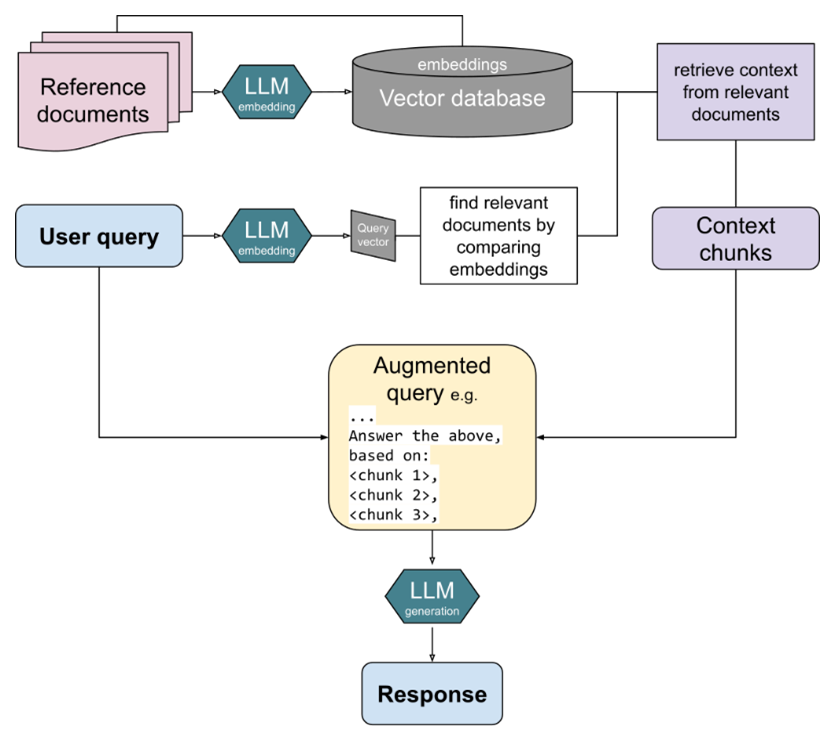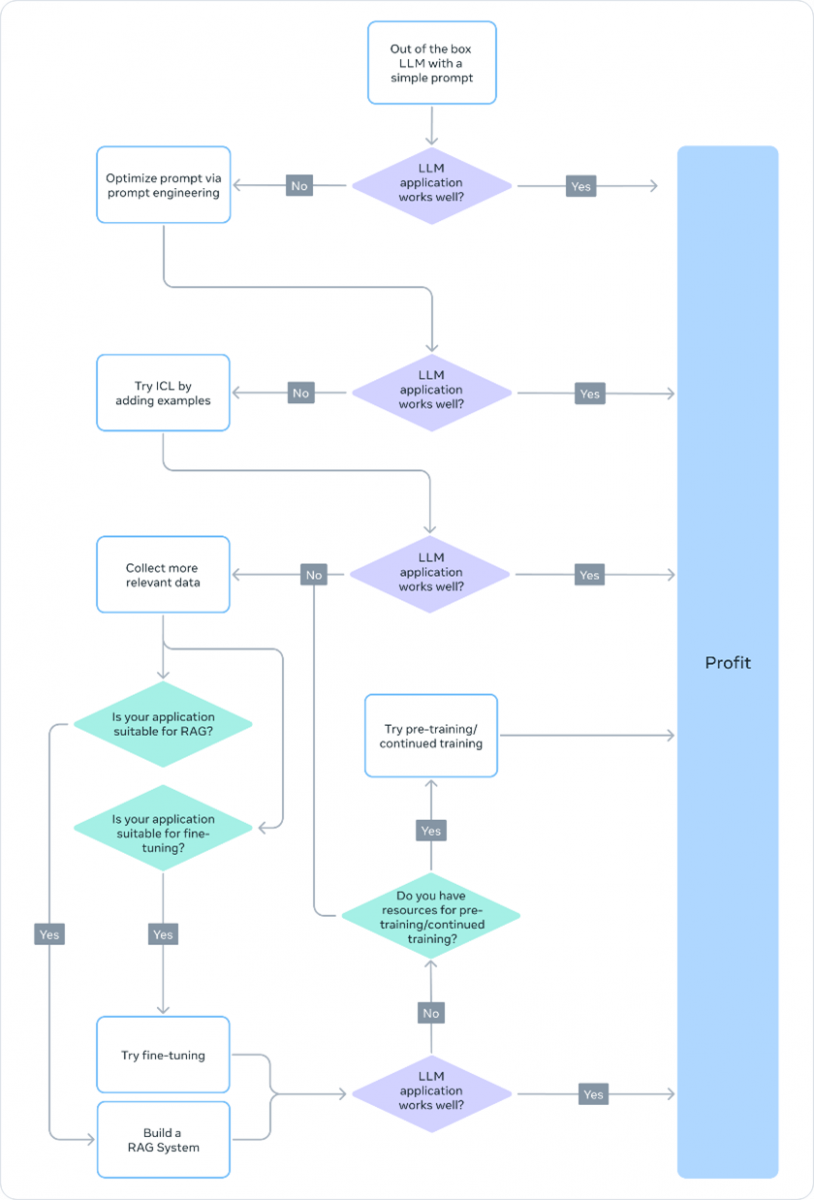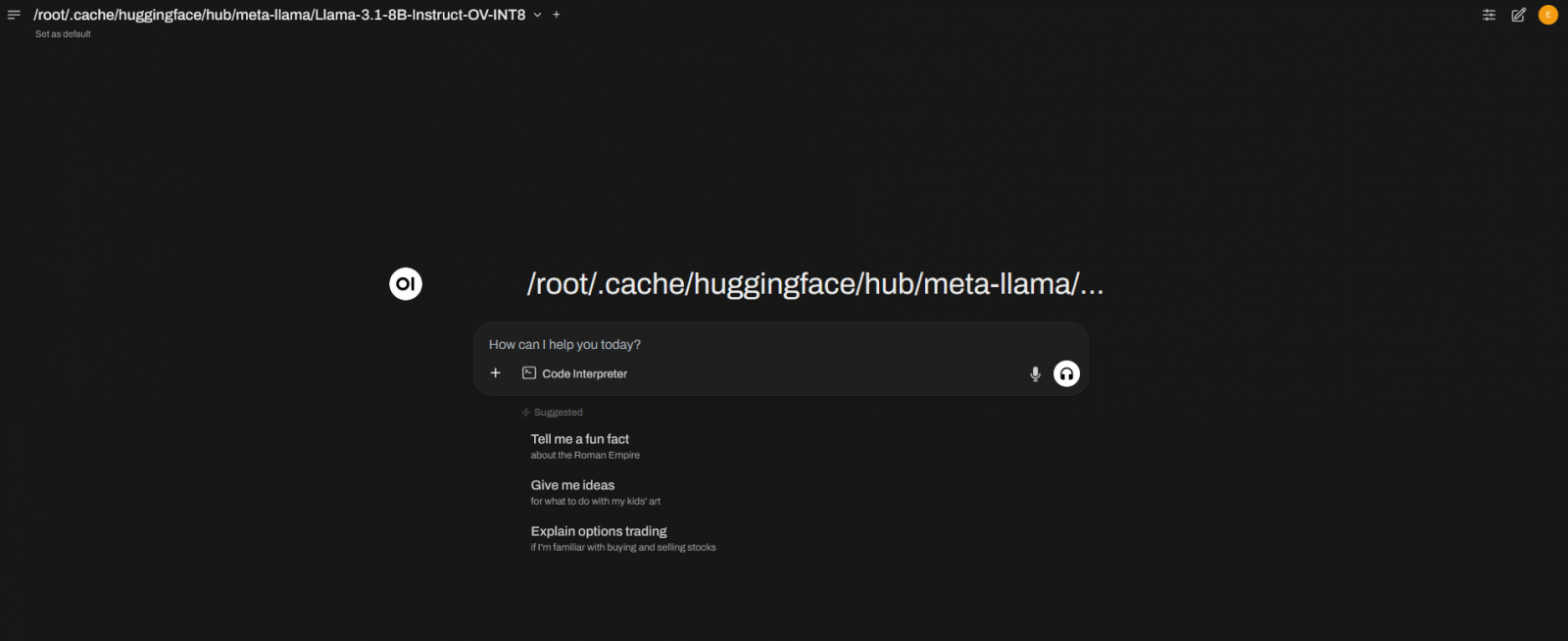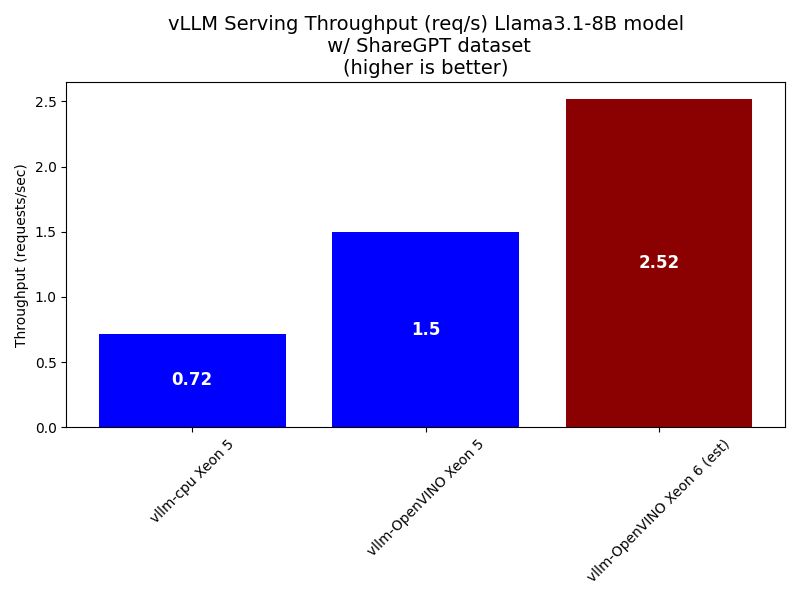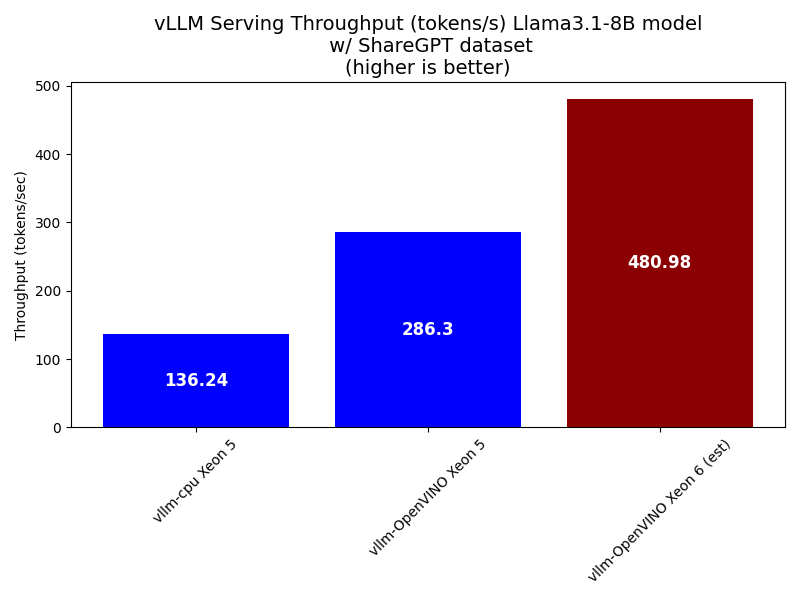Author
Published
1 Jul 2025Form Number
LP2249PDF size
26 pages, 1.1 MBAbstract
In this paper we provide a practical guide to implementing Generative AI using Intel® Xeon® 6 processors, offering a cost-effective and scalable alternative to traditional GPU-based deployments. Targeted at IT architects, AI engineers, and enterprise decision-makers, the paper outlines a reference architecture built on Lenovo ThinkSystem SR650 V4 servers and optimized through Intel’s AI acceleration technologies such as AMX and AVX-512. This paper details the end-to-end process of deploying large language models (LLMs)—from model selection and setup to optimization, fine-tuning, and inference—leveraging OpenVINO for high performance on CPUs.
Readers are expected to have a basic understanding of AI workloads, Linux-based system setup, and containerization tools like Docker. Whether exploring prompt engineering, Retrieval-Augmented Generation (RAG), or fine-tuning strategies, this document equips technical teams with actionable steps for deploying high-quality AI services using general-purpose hardware. It demonstrates that, with the right tools and configuration, modern CPUs can power advanced generative applications at scale—without the cost and complexity of GPUs.
Introduction
Generative AI has emerged as a transformative force across industries, driving innovations in content creation, automation, and decision-making. From large language models (LLMs) powering chatbots to AI-generated media and drug discovery, the ability to generate human-like text, images, and solutions is reshaping how businesses operate. Traditionally, the field of Generative AI has relied heavily on GPUs due to their ability to perform massive parallel computations required for training and inferencing large-scale models. However, this dependence comes with significant challenges, including high costs, limited supply, energy consumption, and infrastructure complexity.
While frontier models such as GPT-4 and Gemini have demonstrated impressive capabilities as general-purpose AI systems, they come with substantial drawbacks. Their tremendous computational requirements necessitate the use of costly GPUs making them expensive to train and deploy, and their generalized nature can limit accuracy in specialized domains. Additionally, these large-scale models are often unable to integrate proprietary data effectively due to their closed-source nature, making them less adaptable for enterprise applications. In contrast, domain-specific models (DSMs) offer a more efficient alternative, focusing on specific industries or applications. DSMs also require fewer computational resources, making them more cost-effective while achieving higher accuracy in their specified domains. Their smaller size enables easier deployment on CPUs, and organizations can enhance their capabilities by incorporating proprietary data through retrieval-augmented generation (RAG) or post-training fine-tuning.
Intel’s advancements in AI-optimized CPUs have further enabled efficient inferencing and, in some cases, even training on general-purpose processors. Intel Xeon 6 processors, equipped AI acceleration technologies (e.g., Intel AMX, AVX-512), large amounts of high-speed last-level cache, and many cores, are increasingly capable of handling Generative AI workloads with competitive performance and lower cost. By leveraging CPUs for AI deployment, organizations can take advantage of existing infrastructure, reduce capital expenditures, and simplify system integration while maintaining efficiency.
This paper presents a reference architecture for deploying Generative AI models on clusters of Intel CPU powered Lenovo servers, providing a cost-effective and scalable alternative to GPU-based systems. The following sections will guide readers through key aspects of building such a system, including model selection, fine-tuning, optimization for inference, and deployment strategies using vLLM and Docker.
Intel CPUs for Generative AI
The Intel Xeon 6 processors, integrated into Lenovo ThinkSystem SR650 V4, provide a powerful and scalable platform for generative AI workloads. With higher core density, double the memory bandwidth, and upgraded P-cores, Intel Xeon 6 processors ensure efficient execution of large-scale AI inference. Combined with the SR650 V4 which offers enterprise-grade reliability and optimized power efficiency, it is an ideal choice for AI deployments without GPU reliance.
An integral part of the Intel Xeon 6 processor, Intel Advanced Matrix Extensions (AMX) and AVX-512 significantly accelerate deep learning workloads by optimizing matrix multiplications and vectorized computations. These enhancements improve transformer-based model execution, enabling faster and more efficient AI inferencing on CPUs.
The OpenVINO Toolkit enables hardware-aware AI inference optimizations, including model compression, quantization (FP16, INT8, INT4), and operator fusion. These optimizations reduce memory footprint, lower latency, and maximize CPU performance, making OpenVINO a key enabler of cost-effective, scalable AI solutions.
System Setup
In this section we provide steps to set up the system environment which will be useful for the rest of the paper. This includes installing Docker, creating a Python virtual environment, and saving a Huggingface token.
Topics in this section:
Docker Install
The following steps describe how to install Docker on Ubuntu 24.10. For more details on Docker installations, go to https://docs.docker.com/engine/install/.
- Set up Docker’s apt directory
# Add Docker's official GPG key: sudo apt-get update sudo apt-get install ca-certificates curl sudo install -m 0755 -d /etc/apt/keyrings sudo curl -fsSL https://download.docker.com/linux/ubuntu/gpg -o /etc/apt/keyrings/docker.asc sudo chmod a+r /etc/apt/keyrings/docker.asc # Add the repository to Apt sources: echo \ "deb [arch=$(dpkg --print-architecture) signed-by=/etc/apt/keyrings/docker.asc] https://download.docker.com/linux/ubuntu \ $(. /etc/os-release && echo "${UBUNTU_CODENAME:-$VERSION_CODENAME}") stable" | \ sudo tee /etc/apt/sources.list.d/docker.list > /dev/null sudo apt-get update - Install the Docker package
sudo apt-get install docker-ce docker-ce-cli containerd.io docker-buildx-plugin docker-compose-plugin - Verify Docker runs correctly
sudo docker run hello-world
Python Virtual Environment
We recommend installing the uv package to create a virtual python environment to avoid dependency issues and quickly download needed python libraries. Steps are as follows:
- Run the following in your Linux terminal:
curl -LsSf https://astral.sh/uv/install.sh | sh uv venv openvino-env source openvino-env/bin/activate - Activate Virtual environment and install requirements
source openvino_env/bin/activate uv pip install vllm uv pip install optimum-intel[openvino]
Model selection
Several factors must be considered when selecting a model which we broadly categorize into two groups: Application and Compute criterion. Application criteria gauge how suitable a model is for our specific application, for instance performance on relevant datasets and multi-modal capabilities. Compute criteria depend on the compute power available as well as model size and architecture; this includes metrics such as throughput and latency.
We recommend looking through models available on huggingface where over a million pre-trained models are freely available: https://huggingface.co/. Additionally, models already optimized using OpenVINO can be found here: https://huggingface.co/OpenVINO
Topics in this section:
Application Considerations
First and foremost, a model must align with the intended application and its data characteristics. The following factors guide the evaluation process:
- Task-Specific Benchmarking: Selecting a model requires assessing its accuracy and efficiency on relevant datasets. For example:
- Question Answering: Benchmarks such as MMLU (Massive Multitask Language Understanding) and AGIEval help to gauge model performance on textual reasoning and question-answering tasks.
- Code Generation & Reasoning: HumanEval and MBPP (Mostly Basic Python Problems) measure a model’s ability to generate and complete code.
- Translation: FLORES-200 and WMT (Workshop on Machine Translation) are widely used benchmarks for evaluating translation quality across multiple languages, measuring accuracy with metrics like BLEU and ChrF.
- Multimodal Requirements: Some applications require models that can process and generate multiple data types (e.g., text, images, and audio). If the use case involves text-to-image generation (e.g., product design, creative content generation), a vision-language model like BLIP or OpenCLIP may be necessary. If only text-based tasks are required, a language model optimized for CPU inference, such as LLaMA-3 or Falcon, may be preferable.
- Legal and Licensing Considerations: Deploying generative AI models in production requires careful evaluation of licensing terms, intellectual property restrictions, and compliance with regulatory frameworks. Some models, such as LLaMA-3, may have light usage restrictions for commercial applications, while others, like Falcon or Mistral, offer permissive open-source licenses. Additionally, AI-generated content in regulated industries (e.g., healthcare, finance) may require provenance tracking and human oversight to mitigate risks.
In most cases, relevant benchmark performance, multi-modal capabilities, and licensing details are all provided with the model on huggingface or an associated publication.
Compute Considerations
When selecting a generative AI model for deployment on CPUs, key compute-related factors must be evaluated to ensure optimal performance. Unlike GPUs, CPUs excel in general-purpose compute and optimized inference workflows but require careful tuning to achieve low latency and high throughput. The following performance metrics are critical for evaluating model suitability:
- Time-to-First-Token (TTFT): Measures the delay between sending an inference request and receiving the first generated token. Lower TTFT is critical for interactive applications like chatbots and real-time summarization. CPU-based optimizations (provided through OpenVINO) and reduced model precision (e.g., INT8 quantization) can help minimize TTFT.
- Tokens Per Second (TPS): Represents the rate at which a model generates tokens once inference begins. Higher TPS is essential for throughput-bound applications such as document generation, machine translation, and bulk content processing. CPU-based optimizations and reduced model precision can again improve TPS.
- Memory Footprint: Larger models require more RAM, and while more abundantly available than on GPU deployments, large footprints can limit parallel processing capability on CPU-based deployments.
- Batch Size and Concurrency: CPUs can efficiently handle multiple concurrent inference requests if batch processing is optimized. Workloads with high request volumes benefit from advanced batching strategies such as continuous batching, where multiple input sequences are processed in a single inference pass.
Hands-on Testing
To ensure a selected model meets performance expectations for a given application, hands-on testing is essential. This section provides step-by-step guidance on setting up and conducting basic inference tests, measuring key performance metrics such as time-to-first-token (TTFT), tokens per second (TPS), and memory footprint on CPU-based deployments. In this demonstration, we will use an 8 billion parameter Llama-3.1 model.
By running the vLLM image we created earlier, we can host our Llama-3.1 model as well as many other freely available models in a containerized web server which will respond to OpenAI API requests on a specified port.
- First, we start the container, allowing it to share its 8000 port with the host machine and mount the default directory where huggingface models are stored for easy access:
docker run -it --rm -p 8000:8000 \ -v ~/.cache/huggingface:/root/.cache/huggingface \ -e HF_TOKEN= \ -e CUDA_VISIBLE_DEVICES="" \ vllm-openvino-plugin-docker-img - With the Docker container running, we may start the vLLM engine and begin serving the model. For this example we keep the command simple, simply listing the model we wish to host, the maximum model length, and specify the cpu as the target device. vLLM has an enormous number of features and a complete list of command line arguments is provided here: https://docs.vllm.ai/en/stable/cli/serve.html
vllm serve "meta-llama/Llama-3.1-8B-Instruct" \ --max-model-len 32768 \ --device cpu \ --disable-log-requests - After a few moments the model should be running on the newly created server and be capable of receiving requests through a curl command. We can verify the web server is running and able to receive requests using the following command in a separate command line window. It should indicate the Llama-3.1-8B model is available.
curl http://localhost:8000/v1/models - Once we have verified the server is operational, we can make inferencing calls to the model using the OpenAI Completions API. We provide an example below but encourage the reader to experiment with their own prompts and observe both the output and the token generation speeds.
curl http://localhost:8000/v1/chat/completions \ -H "Content-Type: application/json" \ -d '{ "model": "meta-llama/Llama-3.1-8B-Instruct", "max_tokens": 100, "messages": [ {"role": "system", "content": "You are a helpful assistant."}, {"role": "user", "content": "Tell me about the benefits of using Intel Processors."} ] }' - Once we have adequately determined a selected model generates meets our application requirements, we can benchmark TTFT and TPS metrics to ensure it meets our compute requirements. The vLLM package contains several useful benchmarking scripts, including benchmark_serving.py. This script will make inference requests to the API using prompts from a sample dataset and time the response.
# Download vllm codebase git clone https://github.com/vllm-project/vllm.git # Download ShareGPT Dataset curl -L https://huggingface.co/datasets/anon8231489123/ShareGPT_Vicuna_unfiltered/resolve/main/ShareGPT_V3_unfiltered_cleaned_split.json -o ShareGPT_V3_unfiltered_cleaned_split.json - Now we can run the benchmarking script by specifying several command line arguments including: the model, port, dataset path, number of prompts, and request rate. The number of prompts and request rate determines how many API calls will be made and at what rate. An infinite rate means all API requests are made simultaneously.
python3 vllm/benchmarks/benchmark_serving.py --host localhost --port 8000 --endpoint /v1/chat/completions --backend openai-chat --model meta-llama/Llama-3.1-8B-Instruct --dataset-path ShareGPT_V3_unfiltered_cleaned_split.json --num-prompts 10 --request-rate inf Example Output: ============ Serving Benchmark Result ============ Successful requests: 10 Benchmark duration (s): 59.23 Total input tokens: 13693 Total generated tokens: 2193 Request throughput (req/s): 0.17 Output token throughput (tok/s): 37.02 Total Token throughput (tok/s): 60.14 ---------------Time to First Token---------------- Mean TTFT (ms): 1491.89 Median TTFT (ms): 1491.60 P99 TTFT (ms): 1496.59 -----Time per Output Token (excl. 1st token)------ Mean TPOT (ms): 79.11 Median TPOT (ms): 78.73 P99 TPOT (ms): 81.89 ---------------Inter-token Latency---------------- Mean ITL (ms): 77.90 Median ITL (ms): 76.86 P99 ITL (ms): 95.70
Model Customization
After selecting a base model, LLMs can be further tailored to specific business needs. The ideal method of optimization varies based on the specific use case as well as the amount of time and resources a company can dedicate. The three primary methods of customization—Prompt Engineering, Retrieval-Augmented Generation (RAG), and Fine-Tuning—fall along a spectrum of increasing complexity and effectiveness.
Topics in this section:
Prompt Engineering
Prompt Engineering is the process of crafting input prompts to guide the model’s responses without modifying its parameters. By carefully structuring prompts, users can achieve significant improvements in model performance with minimal effort. This technique is especially useful for applications where real-time adaptability is required or where model modifications are impractical or costly.
Here are a couple examples using Alpaca prompting:
Translation Prompt:
### Instruction: Translate the input from English to Spanish
### Input: {user input}
### Response:
Sentiment Analysis Prompt:
### Instruction: Analyze the sentiment of the following customer review and classify it as Positive or Negative.
### Input: {user input}
### Response:
We can enhance the effectiveness of the prompt using a technique known as few-shot learning, where the model is provided with a few examples of the desired output format within the prompt. This helps the model generalize better to new queries without requiring retraining.
For example:
### Instruction: Analyze the sentiment of the following customer review and classify it as Positive or Negative.
Example 1:
Review: "This laptop is amazing! Super fast, great battery life, and the screen is beautiful."
Sentiment: Positive
Example 2:
Review: "Terrible experience! It stopped working after just two days, and customer service was unhelpful."
Sentiment: Negative
Now, classify the sentiment of this review:
### Input: {user input}
### Response:
Retrieval-Augmented Generation (RAG)
RAG enhances generative models by integrating an external retrieval mechanism, such as a search engine or a vector store, allowing the system to fetch relevant document chunks or structured data before generating responses (see the figure below). This method is particularly effective when factual accuracy or domain-specific knowledge is required.
Instead of relying solely on the model's pretrained knowledge, RAG dynamically retrieves information from an external database or knowledge source. This allows for up-to-date and contextually relevant responses, addressing the model’s limitations in factual recall.
Fine-Tuning
Fine-tuning involves training an LLM on a domain-specific dataset to adapt its behavior, tone, and knowledge to a particular application. Unlike Prompt Engineering and RAG, which operate without modifying the model’s internal weights, fine-tuning directly updates the parameters of the model, leading to deeper customization and improved performance in targeted tasks.
Fine-tuning is the most resource-intensive customization approach, but it is the best choice when:
- The model needs to align with a specific domain (e.g., legal, medical, or technical fields) that is not well-represented in its original training data.
- The model must exhibit a distinct brand voice, style, or company-specific terminology.
- High accuracy and consistency are required for tasks where prompt engineering and retrieval-based methods fall short.
- The model should reduce hallucinations by refining its knowledge within a limited scope.
For a more in-depth discussion on implementing fine-tuning, readers can refer to our previous paper on this topic:
https://lenovopress.lenovo.com/lp2179-fine-tuning-llms-using-intel-xeon-cpus
Choosing the Right Approach
When deciding on a customization strategy, planners should consider the amount of training data available as well as the cost to train and implement the method. It’s generally best to start by trying the simplest/easiest solution, checking if it meets the application’s needs, and increasing the complexity if needed. We list the available approaches in order of increasing complexity and direct the reader to Meta’s recommendation flowchart shown in the figure below.
- Prompt Engineering - Quick and cost-effective; works well for simple adaptations.
- RAG - Useful when external knowledge is required without retraining the model.
- Fine-Tuning - Necessary for deep customization, improved accuracy, and specific formatting requirements.
Optimization for Inference
Once a base model has been selected and tailored, further optimizations can be applied to achieve lower latency, higher throughput, and efficient memory utilization onboard Intel CPUs. OpenVINO provides techniques to accelerate LLM inference on Intel CPUs. This section explores key optimization methods and best practices for deploying LLMs efficiently using OpenVINO.
Topics in this section:
Weight Compression
Optimizing the memory footprint of Large Language Models (LLMs) is essential for efficient deployment, particularly on resource-limited hardware. Weight compression reduces model size and computational resources used, while maintaining inference accuracy by focusing exclusively on weight optimization, as opposed to full quantization, which modifies both weights and activations.
For instance, compressing an 8-billion parameter Llama 3 model using 4-bit quantization can reduce its size from approximately 16.1 GB to 4.8 GB, significantly lowering memory requirements without extensive accuracy trade-offs.
Implementing Weight Compression
Compressing models is simple using the Optimum command line interface with OpenVINO support. After being weight-compressed, models can be deployed in the same manner as the original models. We can simply use the export openvino command and specify the model, the desired weight format, and the save location. The weight format includes most standard formats (fp32, fp16, int8, int4).
Deeper control is available with more options listed here: https://huggingface.co/docs/optimum/en/intel/openvino/export
optimum-cli export openvino \
--model meta-llama/Llama-3.1-8B-Instruct \
--weight-format int8 \
~/.cache/huggingface/hub/meta-llama/Llama-3.1-8B-Instruct-OV-INT8
Model Deployment and Serving
Once we have selected and optimized our model, deployment in vLLM is as simple as deploying it in a Docker container in the same manner as we did before.
# Start the container
docker run -it --rm \
-p 8000:8000 \
-e CUDA_VISIBLE_DEVICES="" \
-v ~/.cache/huggingface:/root/.cache/huggingface \
vllm-openvino-plugin-docker-img
# Inside the container
vllm serve "/root/.cache/huggingface/hub/meta-llama/Llama-3.1-8B-Instruct-OV-INT8" \
--max-model-len 32768 \
--device cpu
At this point we have successfully deployed a containerized LLM capable of responding to OpenAI Completion API requests. However the average user may find it cumbersome to make requests using curl commands, so we may use OpenWebUI to provide a more natural user interface. We can again containerize the application using Docker.
The important settings to note are the OPENAI_API_BASE_URL which should point to where we direct the OpenAI Completion API requests and the port we host the webpage on. In this instance we can access the OpenWebUI site at http://localhost:8080 but can be accessed remotely depending on your router configuration.
docker run -d -p 3000:8080 \
--network host \
-v open-webui:/app/backend/data \
--name open-webui \
--restart always \
--env=OPENAI_API_BASE_URL=http://localhost:8000/v1 \
--env=OPENAI_API_KEY=token-abc123 \
--env=ENABLE_OLLAMA_API=false \
ghcr.io/open-webui/open-webui:main
After creating an admin profile, you may now service new users in a clean UI similar to that of ChatGPT with a wide variety of features and extensions including web search and RAG search.
Performance
Here we showcase the serving performance of the Intel Xeon 5 8592+ processor with and without OpenVINO acceleration as well as the estimated performance of the next generation Xeon 6700 with Performance-cores. We use vllm’s benchmark_serving.py script mentioned earlier in the paper with Llama3.1-8B using the default parameters of 1000 requests and an infinite request rate.
Our results indicate OpenVINO more than doubles the throughput over the vanilla vllm-cpu docker container and we estimate a 68% improvement using the Intel Xeon 6700 over the previous generation.
Bill of Materials
The folllowing table provides a bill of materials for a cost-effective, CPU-only ThinkSystem SR650 V4 for AI Inferencing.
Intel Processor SKU list for AI Systems
The following table lists select Intel processor SKUs designed for use in AI systems, highlighting their core counts and generational differences to help guide hardware selection based on performance and workload requirements.
References
For more information, see these resources:
- Docker Install
https://docs.docker.com/engine/install/ - OpenVINO vLLM Plugin
https://github.com/vllm-project/vllm-openvino - Optimum-cli with OpenVINO options
https://huggingface.co/docs/optimum/en/intel/openvino/export - RAG Diagram
https://en.wikipedia.org/wiki/Retrieval-augmented_generation - Meta Blog Post - Methods for adapting large language models
https://ai.meta.com/blog/adapting-large-language-models-llms/ - Meta Blog Post - To fine-tune or not to fine-tune
https://ai.meta.com/blog/when-to-fine-tune-llms-vs-other-techniques/ - Meta Blog Post - How to fine-tune: Focus on effective datasets
https://ai.meta.com/blog/how-to-fine-tune-llms-peft-dataset-curation/ - vLLM Command Line Arguments
https://docs.vllm.ai/en/stable/cli/serve.html
Authors
Eric Page is an AI Engineer at Lenovo. He has 6 years of practical experience developing Machine Learning solutions for various applications ranging from weather-forecasting to pose-estimation. He enjoys solving practical problems using data and AI/ML.
Trademarks
Lenovo and the Lenovo logo are trademarks or registered trademarks of Lenovo in the United States, other countries, or both. A current list of Lenovo trademarks is available on the Web at https://www.lenovo.com/us/en/legal/copytrade/.
The following terms are trademarks of Lenovo in the United States, other countries, or both:
Lenovo®
ThinkSystem®
XClarity®
The following terms are trademarks of other companies:
Intel®, the Intel logo, OpenVINO®, and Xeon® are trademarks of Intel Corporation or its subsidiaries.
Linux® is the trademark of Linus Torvalds in the U.S. and other countries.
Other company, product, or service names may be trademarks or service marks of others.
Configure and Buy
Full Change History
Course Detail
Employees Only Content
The content in this document with a is only visible to employees who are logged in. Logon using your Lenovo ITcode and password via Lenovo single-signon (SSO).
The author of the document has determined that this content is classified as Lenovo Internal and should not be normally be made available to people who are not employees or contractors. This includes partners, customers, and competitors. The reasons may vary and you should reach out to the authors of the document for clarification, if needed. Be cautious about sharing this content with others as it may contain sensitive information.
Any visitor to the Lenovo Press web site who is not logged on will not be able to see this employee-only content. This content is excluded from search engine indexes and will not appear in any search results.
For all users, including logged-in employees, this employee-only content does not appear in the PDF version of this document.
This functionality is cookie based. The web site will normally remember your login state between browser sessions, however, if you clear cookies at the end of a session or work in an Incognito/Private browser window, then you will need to log in each time.
If you have any questions about this feature of the Lenovo Press web, please email David Watts at dwatts@lenovo.com.

